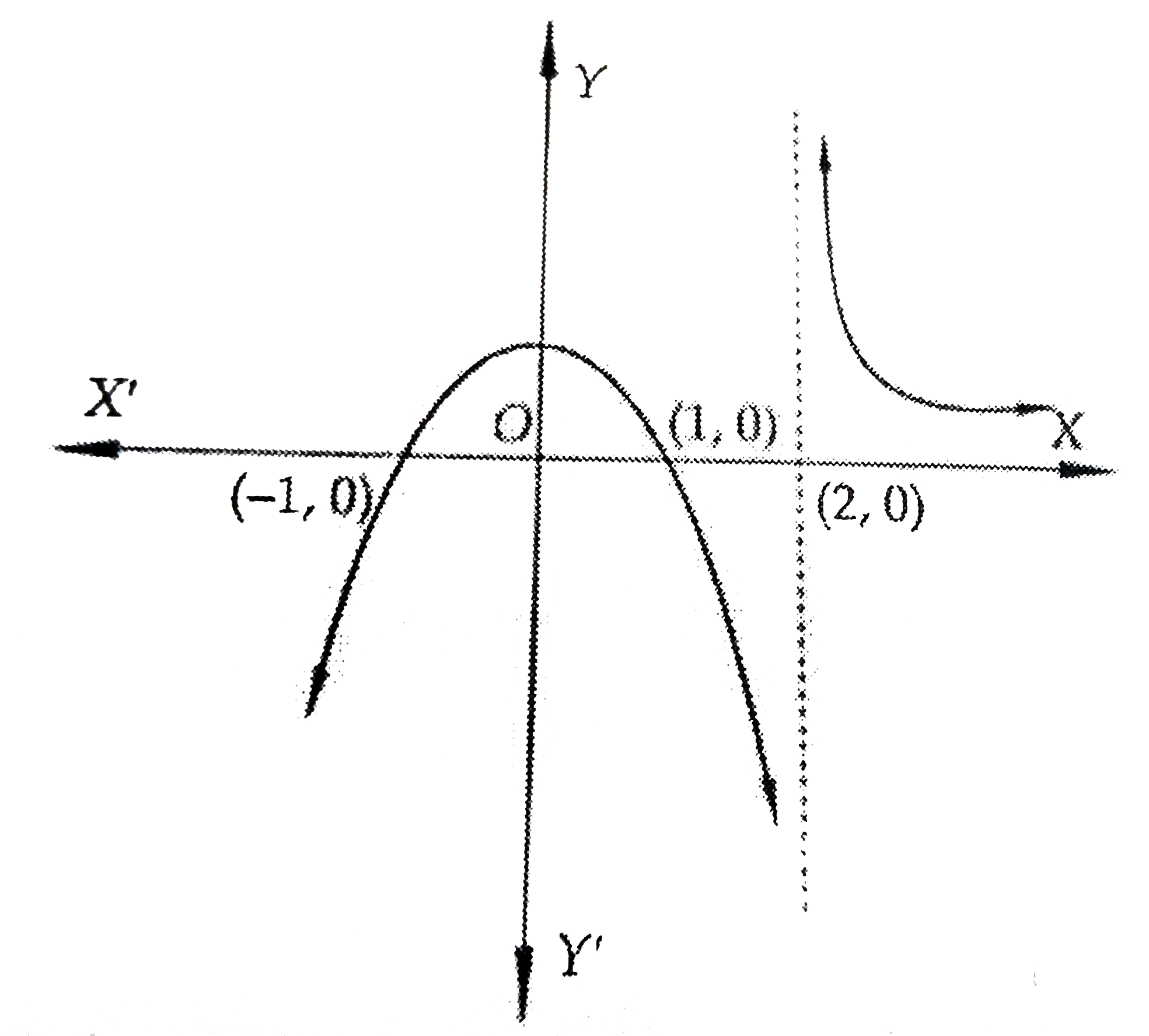Area bounded by f(x)=(x−1)(x+1)x−2 x-axis and ordinates x=0 and x=32 is
A
45
B
78
C
1
D
none of these
Video Solution
Text Solution
The correct Answer is:B
Clearly, f(x) is everwhere continuous and differentiable except at x=2. The signs of f(x) for different values of x are shown in Fig. 11.

A rough sketch of the curve y=f(x) is as shown in Fig. 12.

Let A denote the required area. Then,
A=3/2∫0f(x)dx
⇒A=1∫0f(x)dx+∣∣
∣
∣∣3/2∫1f(x)dx∣∣
∣
∣∣
⇒A=1∫0(x−1)(x+1)x−2dx−3/2∫1(x−1)(x+1)x−2dx
⇒A=1∫0(x+2+3x−2)dy−3/2∫1(x+2+3x−2)dx
⇒A=[(x+2)22+3log|x−2|]10−[(x−2)22+3log|x−2|]3/21
⇒A=(92−2−3log2)=[(498+log12)−92]=78 sq. units.
|
Topper's Solved these Questions
- AREAS OF BOUNDED REGIONSBOOK - OBJECTIVE RD SHARMACHAPTER - AREAS OF BOUNDED REGIONSEXERCISE - Exercise
62 Videos
- AREAS OF BOUNDED REGIONSBOOK - OBJECTIVE RD SHARMACHAPTER - AREAS OF BOUNDED REGIONSEXERCISE - Chapter Test
60 Videos
- APPLICATION OF DERIVATIVESBOOK - OBJECTIVE RD SHARMACHAPTER - APPLICATION OF DERIVATIVESEXERCISE - Illustration
6 Videos
- CARTESIAN PRODUCT OF SETS AND RELATIONS BOOK - OBJECTIVE RD SHARMACHAPTER - CARTESIAN PRODUCT OF SETS AND RELATIONS EXERCISE - Chapter Test
31 Videos
Similar Questions
Knowledge Check
The area bounded by the curve y=(x−1)(x−2)(x−3), x-axis and ordinates x=0,x=3 is :
A94B114C112DNone of theseArea bounded by the curve y=x2, the x-axis and the ordinates x=−2andx=1 is :
A−9B−154C154D174The area bounded by y=1+8x2, X-axis and the ordinates x=2, x=4 is
A2B4Clog 2Dlog 4
Find the area bounded by the curve y=xex2 , x-axis and the ordinates x=0 and x=h.
View SolutionThe area bounded by the curve f(x)=cex(c>0) ,the x -axis and the two ordinates x=p and x=q is equals to
View SolutionArea bounded by the curve y=x3, the x-axis and the ordinates x=−2andx=1 is
View SolutionThe area bounded by y=log x, x-axis and ordinates x = 1, x= 2 is :
View SolutionThe area bounded by y=log x, x-axis and ordinates x = 1, x= 2 is :
View Solution
